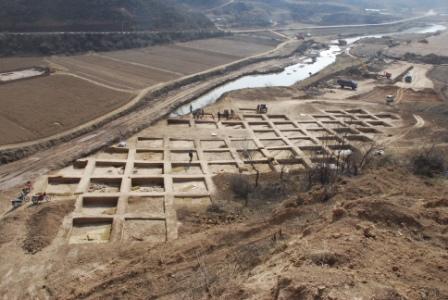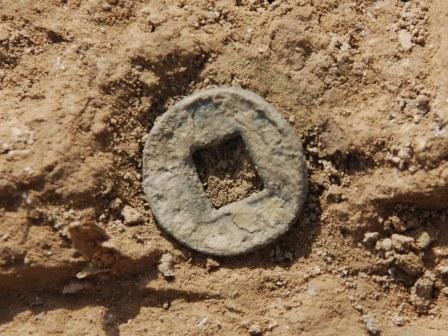Prominent Archaeological Discovery of Qin Dynasty Highway Ruins in Shaanxi Province
The Shaanxi Archaeology Institute conducted an excavation focuses on Qin Dynasty Highway Ruins, which is regarded the largest scale archaeological excavation with significant discovery in this area.
Qin Emperor assigned General Meng Tian to build the Qin highway. The highway was originally a military route connecting Chunhua, Xianyang and Baotou in Inner Mongolia. The length of the highway was about 700 km with 30-50 meters in width. The highway also known as “Straight Highway” with a north-south orientation. The highway passed through counties of Chunhua, Xunyi, Yijun, Huangling, Fuxian, Ganquan and Ansa in Shaanxi Province, along with the Ziwuling Mountain Range and straight up to the north. Although the highway was built in a remote area, it has a splendid design.

The archaeological team has conducted various archaeological investigations in Fuxian from 2006 onwards. Two trenches were excavated; original road pavement and drainage were also located. In 2008, three trenches were disclosed, yielding a few carriage track and a coin from Han dynasty.

The recent excavation started on 2nd March 2009 at Huashugoukou, 300m south to Pogendi. The augured area is about 6000 square meters. Sixty-six test ditches with the area of 5m x 5m and 6 trenches were opened. The excavation area is about 2000 square meters. Around 50m of road pavement, which can be separated into 3 periods with 9-10 wheel marks, have been located. The soil between the wheel marks is black and hard. Multiple markings from vehicles can be found in the pavement. Important findings includes corded roof tile and flat tile, dated to the Qin dynasty. A “Daquan Wushi” bronze coin of late Western Han was also recovered, which provides essential proof for the dating process. Moreover, a 5m wide revetment made up of rammed earth is located next to the road by the Calabash river in the north. Other structure features from the same period are also located, and most of them have rammed earth composition. The largest structure has an area of over 200 square meters. From the exposed features, copious amount of corded roof tiles, flat tiles, stone pillar base, pottery pots, basins, zeng vessels and etc. were unearthed. It is assumed that these features are some sort of military guard post in higher standard or checkpoint within the Qin highway system. (Translated by Li Langlin)

